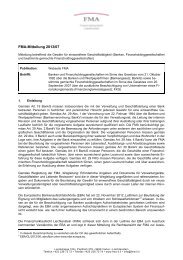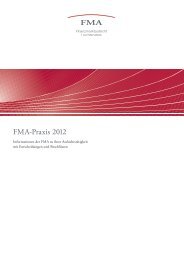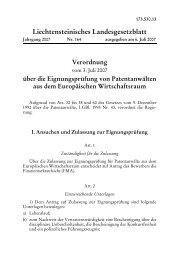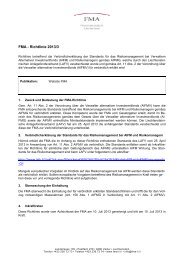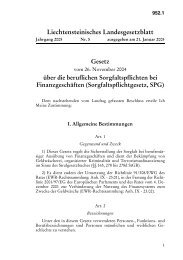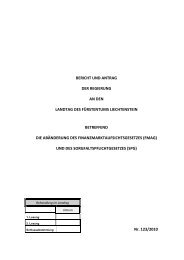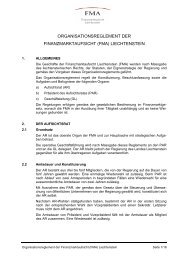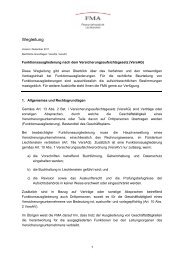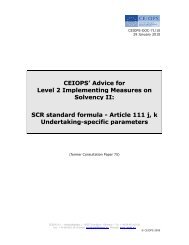CEIOPS' Advice for Level 2 Implementing ... - EIOPA - Europa
CEIOPS' Advice for Level 2 Implementing ... - EIOPA - Europa
CEIOPS' Advice for Level 2 Implementing ... - EIOPA - Europa
You also want an ePaper? Increase the reach of your titles
YUMPU automatically turns print PDFs into web optimized ePapers that Google loves.
in<strong>for</strong>mation regarding the RBNS-claims and should accordingly be able to<br />
stipulate the Gross-to-Net technique to be applied on the gross best<br />
estimate <strong>for</strong> RBNS-provisions in a more accurate manner. On the other<br />
hand the Gross-to-Net technique to be applied on the gross best estimate<br />
<strong>for</strong> IBNR-provisions is then likely to be stipulated in a less precise manner,<br />
especially if more sophisticated techniques are not available.<br />
3.424 Finally, a rationale <strong>for</strong> making a split between “large” claims and “small”<br />
claims may be that the uncertainties related to expected claim amounts on<br />
a net basis <strong>for</strong> claims classified as “large” may in some (important) cases<br />
be small or even negligible compared to the uncertainties related to the<br />
corresponding claim amounts on a gross basis. However, this supposition<br />
depends (at least partially) on the thresholds <strong>for</strong> separation of “large” and<br />
“small” claims being fixed <strong>for</strong> the individual lines of business.<br />
3.425 None of the Gross-to-Net techniques briefly described in annex E are able<br />
to capture all these refinements, even if some aspects related to<br />
refinements (a) and (b) are touched upon (in an indirect manner) when<br />
discussing the properties of the most advanced Gross-to-Net techniques<br />
tested in QIS4. Moreover, it would be relatively straight<strong>for</strong>ward to adjust<br />
type no. (5) in order to capture refinement (c) and to some extent also<br />
refinement (a).<br />
3.426 However, in order to take into account these (possible) refinements it will<br />
in general be necessary to develop more sophisticated techniques than<br />
those being described in annex E. On the other hand, these refinements<br />
should only be introduced if they in fact lead to an increased accuracy of<br />
the best estimate of provisions <strong>for</strong> claims outstanding net of reinsurance.<br />
3.427 In this context, it may be argued that refinement (c) should be prioritised<br />
as this may be relevant <strong>for</strong> as least some of the commercial lines of<br />
business and is probably also the easiest refinement to implement. Be<strong>for</strong>e<br />
introducing this refinement it should also be considered whether the<br />
thresholds to be fixed in order to separate “large” and “small” claims could<br />
depend on the size of the undertaking (or the size of undertaking’s<br />
portfolio within the line of business in question) or the nature of the<br />
reinsurance programme.<br />
87/112<br />
© CEIOPS 2010




